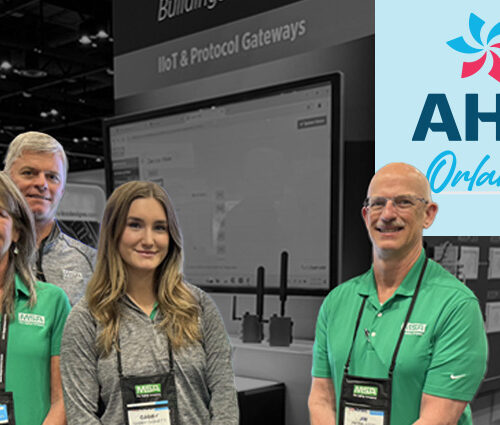The sophisticated process instrumentation and control systems that today automate the operation of everything from smart buildings to wastewater treatment plants are constantly evolving. For example, the basic liquid and gas flow metering technologies that measure fluid flow rates and totalized flows are not only more accurate than ever, but now also must provide flow data over a dizzying array of standardized digital bus data communication protocols.
The Challenges
In a perfect world as seen through the eyes of flow meter design engineers, they would not only be the customer’s first choice for measurement accuracy and reliability, but would also be able to specify the choice of data communications bus, the choice of controllers and the full automation system. That’s because it’s cost-prohibitive to provide all available standard communication protocols in a single flow meter transmitter.
For example if a flow meter manufacturer does not install the BACnet protocol on its transmitters, it will be challenging to address the full scope of the building automation market. If a manufacturer’s flow, pressure or temperature instrument – or another piece of equipment such as an HVAC, lighting or security system – doesn’t operate over BACnet, then the instrument or equipment are not likely to be considered for use.
The same situation occurs at industrial plants such as municipal or industrial wastewater treatment facilities, where, for example, EtherNet/IP or Modbus TCP/IP have been installed on-site or where a new site must be compatible with the operator’s existing multi-site network. It is then up to the flow meter manufacturer to accommodate the plant’s previously installed choice of data communications protocol.
The Answers
All manufacturers of industrial instrumentation, controllers and automation systems must address the communications digital bus protocol challenge by operating flexibly in a world of multiple choices. Providing all of the protocols is often impractical, though, because it requires extensive engineering, testing and third-party certification. This process can take months or years, and the costs are considerable.
Of course, the customer’s choice is always the right one, and as an instrumentation supplier it is best to have a flexible solution that meets the needs of every new customer. That’s where MSA’s FieldServer™ ProtoAir Wireless Gateway fits in: It provides industrial instrument and equipment manufacturers with a solution to their digital bus communication protocol challenges that is ready-to-go right out of the box with minimal commissioning.
The ProtoAir is an external, high-performance, low-cost building automation and industrial control Industrial Internet of Things (IIoT) gateway for original equipment manufacturers (OEMs). It provides instant multi-protocol deployment of field data communication protocols, enabling new or legacy devices to interface easily with other protocols. In addition, it provides connectivity to the cloud for centralized operation and monitoring of remote sites.
With the ability to connect devices to the cloud over wireless and cellular connections and automatically support multiple known controller profiles, the ProtoAir is the fast, practical answer to the OEM’s customer needs and IIoT requirements. It includes Wi-Fi and LTE cellular connectivity options, acts as a Wi-Fi access point and facilitates local applications. It helps decrease time-to-market, reduce development costs and minimize risks.
The ProtoAir offers all the benefits of MSA’s trusted FieldServer IIoT gateway and router family, such as flexibility with the world’s largest library of 140+ protocols as well as low installation and operating costs. The ProtoAir can connect to one or more FieldServer standard drivers via its serial or EtherNet port, enabling wireless connectivity to different devices and/or networks.
Solution Partner Experience
For Siemens SITRANS F flow meter product line, the ProtoAir was the best answer to customer requirements for operating over EtherNet to support municipal wastewater treatment applications. The ProtoAir also provides BACnet compatibility for SITRANS F flow meters to support liquid and gas applications in the building automation industry.
The trusted Siemens SITRANS F product family offers versatile and reliable metering solutions for liquid, steam or gas, built to suit every industry and process. The Siemens flow portfolio includes a wide range of measurement technologies along with all the options customers need to fully customize and optimize their installations.
Conclusions
The flow meter field engineers at Siemens were pleased with the ProtoAir’s ease of installation and MSA’s responsive engineering support. They were also particularly enthusiastic about the ProtoAir’s Wi-Fi connectivity feature, which gives them device remote access for flow transmitter set-up, configuration, maintenance and troubleshooting of flow applications.




